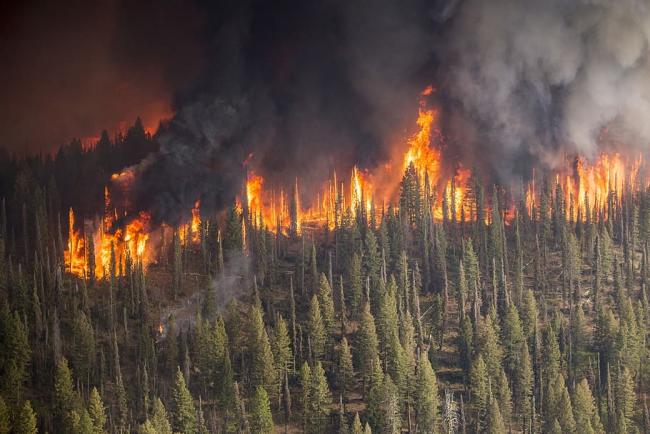Data Puzzle: Megafire - Rare Occurrences or the New Normal?
Megafires are extreme fire events characterized by their high intensity, fast speed, long duration, devastating impact, and large size. The ever-rising global temperature increase due to climate change has upset the natural balance of water within our ecosystems, leading to increased evapotranspiration and increasing periods of drought in various regions of the world - including the southwest United States. Our drought-ridden land is filled with dry fuel waiting to ignite. In addition, our history of fire suppression has led to increased fuel availability in our forests. Together with other factors, we are seeing an unprecedented increase in the number of megafires that look to continue into the future. Examining the data and discussing the causes of these megafires provides students an opportunity to explore the interaction of humans and their environment.
Context for Use
This Data Puzzle is part of a larger collection of Data Puzzle resources that combine classroom-friendly datasets with Ambitious Science Teaching practices to help students make sense of phenomena!

Photo by DMCA.
Goals Header
What Students Will Do
- Analyze and interpret data to evaluate how the number of megafires across the United States has changed over time.
- Construct conceptual models to explain how changing climate (e.g., increased drought) and land management practices have caused the number of megafires across the United States to change over time.
Teaching Materials
Description
Days 1-2
Part 1 (20 minutes) Eliciting Students' Ideas
- Students reflect upon and share details of the largest bonfire or other open fire they've built or seen constructed. Where were they? Did they gather their own sticks? Were the sticks (fuel) wet or dry?
Part 2 (40 minutes) Identifying Important Science Ideas
- Students engage with an interactive reading to 1) identify similarities between the opening scenario prompt and the work of Dr. Natasha Stravos, a fire ecologist who studies the occurrence of megafires and the factors that influence them, and 2) make predictions as it relates to Dr. Stravos's research question, "How and why has the number of megafires in the United States changed over time?"
Day 2
Part 3 (30 minutes) Supporting Ongoing Changes in Thinking
- Students test their prediction about how the number of megafires in the United States has changed over time by analyzing megafire count data for the United States over time.
Part 4 (30 minutes) Constructing Evidence-Based Explanations
- Students reflect on evidence gathered during parts 1-3 and construct a final explanatory model for the question, "How and why has the number of megafires in the United States changed over time?"




